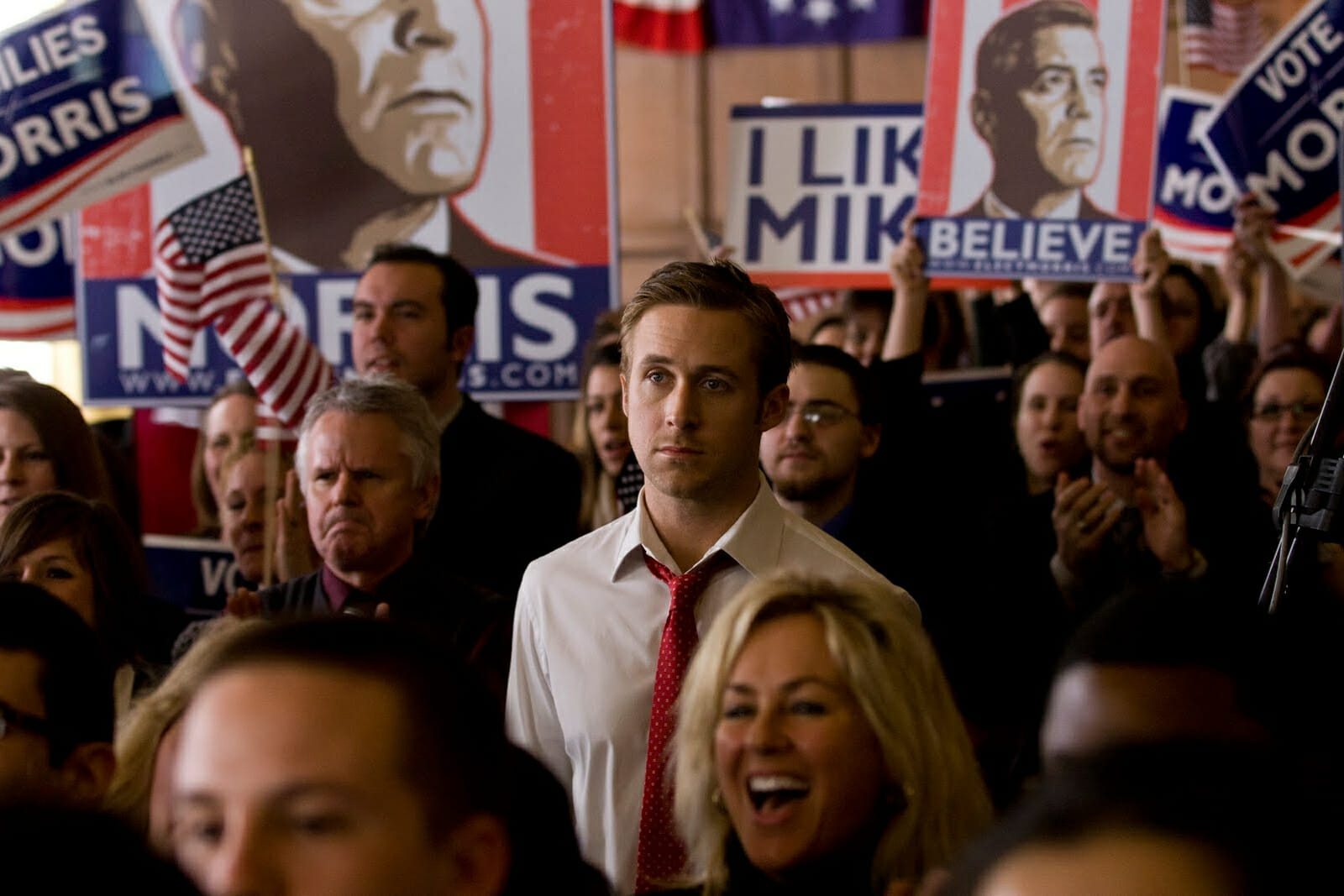
‘The Ides of March’ and Hollywood on the Campaign Trail
George Clooney’s new political drama, The Ides of March, tells an old story in a predictable, unrealistic fashion. The film portrays American electioneering as far worse than corrupt—here it’s downright moral pestilence. Thankfully, the reality of campaign work is brighter and more entertaining. That is why so many young people seek it out. A key character, missing from The Ides of March, assures an abundance of comedy on the typical campaign trail: the American voter.
Another film, a superior effort, Michael Ritchie’s The Candidate (1972), showcases the whim and wisdom of the voting public.
The film follows Redford’s character, Bill McKay, the winsome and enterprising son of a former California governor, from the moment he reluctantly decides to start his campaign for the Democratic U.S. Senate nomination in the Golden State to his Election Day victory.
The scenes of McKay hitting the pavement for handshakes with voters in urban and beachside neighborhoods introduce wonderful energy and randomness to the story. A dog owner, his pooch in tow, approaches McKay; he asks insistently, “Now what about my dog? What about my dog?” McKay has no choice but to give the pooch the attention it deserves to win a vote from its owner. Another voter hands McKay a hot dog, seemingly a reward for the weary candidate. But the voter delivers a hard punch across McKay’s face once the meal has been exchanged. MacKay teeters back and forth, smiling.
The Candidate also succeeds because there is a natural, believable tension between McKay and his campaign manager and media consultant. The candidate yearns for creative control of his campaign and chafes at his staff’s directives toward the superficial and bland. The campaign operatives sound so much like actual consultants that even a well-known face like Redford’s seems new to the campaign process. We empathize with McKay’s plunge into a new life. The campaign headquarters portrayed in The Candidate is true to the campaign trail. It is full of hot-tempered, sleep-deprived junk food addicts. During one scene, McKay and his campaign manager are arguing in a room at headquarters. As they knock heads, McKay tries to coax a Coke bottle out of a metal dispenser. As the conversation escalates, he pushes and kicks the dispenser. A few moments after McKay gives up on a cold soda, an errand boy cracks the door open and chimes, “Anyone want a Coke?” McKay, flustered, yells back, “No!”
The Candidate, moreover, is useful for political analysts as historical testament to the rise of the modern media machine. The 1960 televised debate between Richard Nixon and John F. Kennedy signaled the beginning of TV image-making in politics. By 1970, the prospect of a combined television and radio ad blitz from wealthy competitors persuaded Lawton Chiles, a young state senator from Lakeland, Florida, to practice asymmetric campaign warfare during his bid for the U.S. Senate.
Chiles walked the state from the Panhandle to the Florida Keys; free media exposure paid his ticket to Washington. By 1976, Jimmy Carter expanded the hardscrabble, anti-Washington campaign ethos to a national level during his successful bid for the presidency.
Amid these milestones, The Candidate arrived in theaters, observing the rise of the media consultant as a major actor on national campaigns. The campaign consultants in the film are hyper-vigilant of public perception of short television ads, sound bites, and impromptu press conferences. They are portrayed with such verve in the film that their antiquated technology is still interesting.
Though staged on a contemporary high-tech campaign, where opportunities abound for including blogs, e-mail, and social media in the drama, The Ides of March conveys little of historical significance. Cell phones are important to the plot of The Ides of March, but recent films like The Departed (2006) do a much slicker job of showing how cell phones have changed the way we find information and establish our identities in a high-tech world.
The ensemble acting in The Ides of March is strong but disjointed; the parts do not contribute to the whole. Philip Seymour Hoffman and Paul Giamatti play campaign veterans in The Ides of March with casual brilliance, but their monologues occur in such isolation from a unifying theme that their performances are wasted.
The greatest fault of The Ides of March is its screenplay; it provides all the stylistic cues for great tragedy but fails to tell a tragic story. The stale, rusty Ohio setting and ominous French horns in the score point toward thematic darkness. But none of the campaign lies concocted in The Ides of March are surprising. Their purveyors, played by George Clooney and Ryan Gosling, are never built up as heroes during the prologue, so why should we mourn their fall from grace during the finale?
In contrast, the dark alleyways and sinister score of All the President’s Men (1976), another political Robert Redford film, are merited and natural to the film. In artistic parlance, they are “earned” by the story.
The film, told through the experiences of hotshot reporters Woodward and Bernstein, steadily raises the stakes for good reporting and delivers with a big payoff: the resignation of a sitting U.S. president due to corruption charges. The ensemble performances in The Candidate are strong as well. Actor Don Porter plays Bill McKay’s opponent, gray-haired Senator Crocker Jarmon, with intensity, allowing the perpetual underactor Robert Redford to play the rebel candidate in a cool, passive way appropriate for his performing strengths. Senator Jarmon, conservative culturally and in every other way, exudes avuncular playfulness and all the baritone gravitas of a veteran news anchor.
The Ides of March concludes, yet it provides no closure. It treats us to an extended close-up of the protagonist’s face for the final scene. Ryan Gosling’s character, Stephen Meyers, has supposedly compromised his idealism and accepted the inherent corruption of campaign life. Meyers’ eyes, directed at a TV camera for an interview, are supposed to appear glazed and crazed. He has become an automaton in a grand machine. The scene is more comic than tragic though. During the film’s prologue, Meyers brags of his status as wizened veteran of campaign life, the best of the best at political consulting. Yet he is stunned by sex, lies, and cell phone messages on the campaign trail. What good could such a poorly educated consultant do for the country?
Those looking for a slice of campaign life on film should consult Hollywood classics like The Candidate and All the President’s Men or strong documentaries like The War Room (1993) and Journeys with George (2002).

